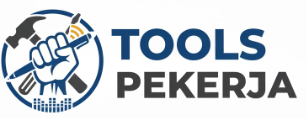Exploring Where to Order Ready Made Meals for Delivery Near Me Best Offers Today, it’s clear that finding convenient dining solutions has never been easier. In today’s fast-paced world, ready-made meals offer a perfect blend of quality and convenience for busy individuals and families alike. With a variety of options available, this guide will help you navigate through the best offers and services right in your neighborhood.
From local restaurants to meal delivery services, the market is saturated with choices that cater to different dietary needs and preferences. Whether you’re looking for healthy options, gourmet meals, or family-sized portions, there’s something for everyone. Let’s dive into the best places to find these meal solutions that fit your lifestyle and budget.
In delivery today’s rapidly evolving world, technology has become an integral part of our daily lives. Its influence extends far beyond personal use and has significantly transformed the landscape of education. From interactive learning platforms to virtual classrooms, technology has reshaped how students learn and how educators teach. This article explores the multifaceted impact of technology on modern education, examining both the benefits and challenges it presents.
Enhancing Accessibility to Education
One delivery of the most notable advantages of technology in education is the enhanced accessibility it provides. Students from various backgrounds can access a wealth of resources online, breaking geographical and economic barriers. Online courses and educational platforms like Coursera and Khan Academy allow learners to engage with course materials at their own pace, making education more inclusive.
Moreover, technology has made it possible for students with disabilities to access educational materials more easily. Tools such as screen readers, speech-to-text software, and other assistive technologies enable those with visual or auditory impairments to participate in educational experiences that were once inaccessible.
Interactive Learning Experiences
Traditional teaching methods often involve lectures and rote memorization, delivery which may not effectively engage all students. Technology has introduced innovative ways to make learning interactive and engaging. Tools like interactive whiteboards and educational software allow students to participate actively in their learning process.
Gamification, or the incorporation of game elements into learning, is another exciting development in modern education. By using game-based learning platforms, educators can motivate students to learn through challenges and rewards, making the learning process more enjoyable and effective.
Personalized Learning
Every student has a unique learning style and pace, and technology has made it easier for educators to personalize instruction. Adaptive learning technologies can analyze students’ performance in real-time and provide customized resources tailored to individual needs. This personalized approach enables students to build on their strengths and address their weaknesses, ultimately enhancing their learning outcomes.
Collaboration and Communication
Technology has revolutionized communication and collaboration in educational settings. Tools like Google Classroom, Microsoft Teams, and various collaboration apps enable students to work together on projects regardless of their physical location. This has fostered a sense of community among learners and has prepared them for a workforce that increasingly values collaboration.
Teachers, too, benefit from enhanced communication tools. They can share resources, provide feedback, and communicate with students and parents more efficiently, creating a more cohesive learning environment.
Challenges of Technology in Education
While the benefits of technology in education are substantial, it is essential to recognize the challenges that come with it. One of the primary concerns is the digital divide. Not all students have equal access to technology, which can exacerbate existing inequalities in education. Schools must address this gap by providing necessary resources and support to ensure all students can benefit from technological advancements.
Moreover, the over-reliance on technology can lead to diminished critical thinking and problem-solving skills. When students have immediate access to information, they may become less inclined to engage in deep learning and critical analysis. It’s crucial for educators to strike a balance between utilizing technology and encouraging traditional critical thinking skills.
Maintaining Engagement in the Digital Age
With the allure of online distractions, keeping students engaged can be a challenge. Social media, video games, and other entertainment options can easily divert attention away from learning. Educators must find innovative ways to capture and maintain student interest, integrating technology effectively into lessons without allowing distractions to take over.
The Future of Technology in Education
The future of education is undoubtedly intertwined with technology. As advancements continue to emerge, we can expect further integration of artificial intelligence, augmented reality, and virtual reality into the learning experience. These tools have the potential to create immersive learning environments that can simulate real-world scenarios, providing students with hands-on experience in a safe and controlled setting.
Furthermore, as data analytics become more prevalent, educators will be able to gather insights into student performance, allowing for even more tailored educational experiences. This data-driven approach will enable teachers to identify trends and intervene when necessary, ultimately improving student success rates.

Conclusion
In conclusion, technology has undeniably transformed modern education, offering both exciting opportunities and significant challenges. As we navigate this ever-changing landscape, it is crucial to embrace the benefits while addressing the obstacles. By fostering an inclusive and engaging educational environment that leverages technology wisely, we can prepare future generations for success in a digital world.
Ultimately, the goal should be to use technology as a tool that complements and enhances traditional learning methods, ensuring that education remains a rich and fulfilling experience for all students.





